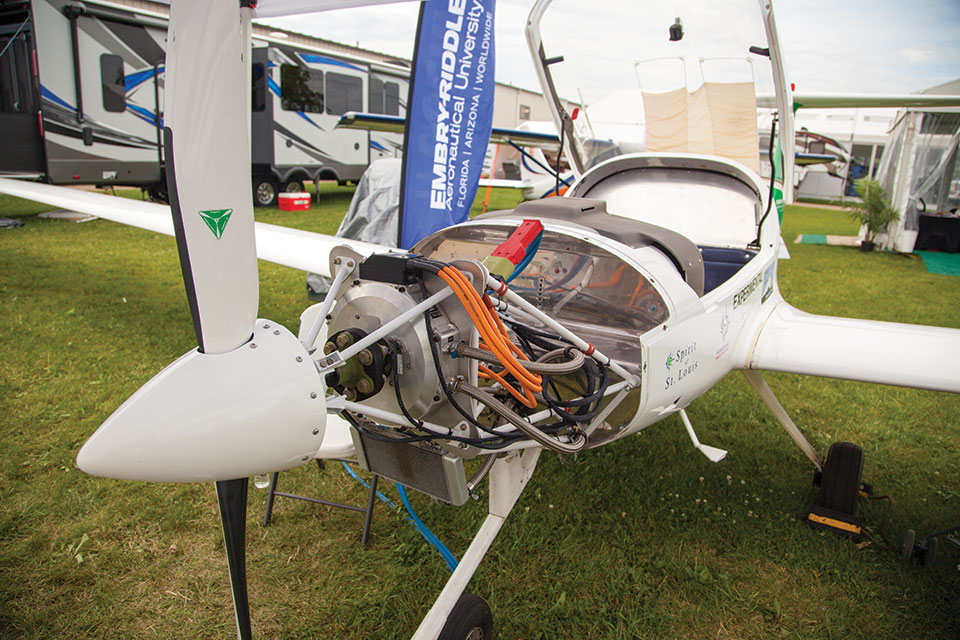ERAU to Bridge Gap Between Electric-Powered Aircraft Research and Commercialization
By Randy Dufault
July 26, 2017 - A number of electric-powered airplanes now populate the commercial market and are a proven technology. So one might ask why Embry-Riddle Aeronautical University would take on a project to equip a standard motorglider with electric propulsion and batteries.
“Hopefully we can help out the industry in this lower technology readiness level (TRL),” Richard “Pat” Anderson, director of ERAU’s Eagle Flight Research Center, said.
When asked what TRL means, Pat said, “Nine is production, one is splitting atoms … five and six is what they call the chasm of death in that some interesting technologies get to three and the basic researchers don’t want to mess with them anymore, but it’s not ready for commercialization.”
ERAU’s project, which they call the e-Spirit of St. Louis, is a student-run effort to span that TRL gap between basic research and true commercialization. A number of electric flight challenges still exist with cooling, motor control, and battery control, particularly as they apply to larger and faster aircraft.
Their plane is located in the GAMA booth here at EAA AirVenture Oshkosh 2017, just west of the EAA Wearhouse.
Tony Zhao, an ERAU engineering graduate student, is the project lead. He stayed at the university after completing his undergraduate degree specifically to continue work on the e-Spirit.
“We need to research the safety aspect, the efficiency aspect, and also the experimental friendly aspect,” Tony said. “Eventually we want to help the FAA judge what type of technology is safe for aviation and what types of technology are not safe for aviation.”
The project is also expected to address overall noise, and what Pat refers to as “wells to wings.”
ERAU has worked on the noise problem before and has piqued the interest of the U.S. National Park Service. Noise is a key factor in the current limits set for flights over national parks. Quieter aircraft may allow for increased access to the parks from the air.
Wells-to-wings refers to the overall energy and emissions life cycle for a particular aircraft configuration. Working with Argonne National Laboratory, ERAU is conducting analyses that consider different fuels and different motors.
The e-Spirit aircraft is a standard Diamond HK36 motorglider. It has a unique history, as Lockheed Martin’s Skunk Works used the craft in its research efforts before donating it to ERAU.
Pat and Tony expect to fly the e-Spirit soon, but funding is a challenge. Students have constructed two of the 30 battery modules needed to power the plane’s 100-hp motor. Constructing the balance of the modules requires additional funding, and ERAU is encouraging everyone to participate in a crowd funding effort. More information about that effort is available at www.Facebook.com/EagleFRC.


